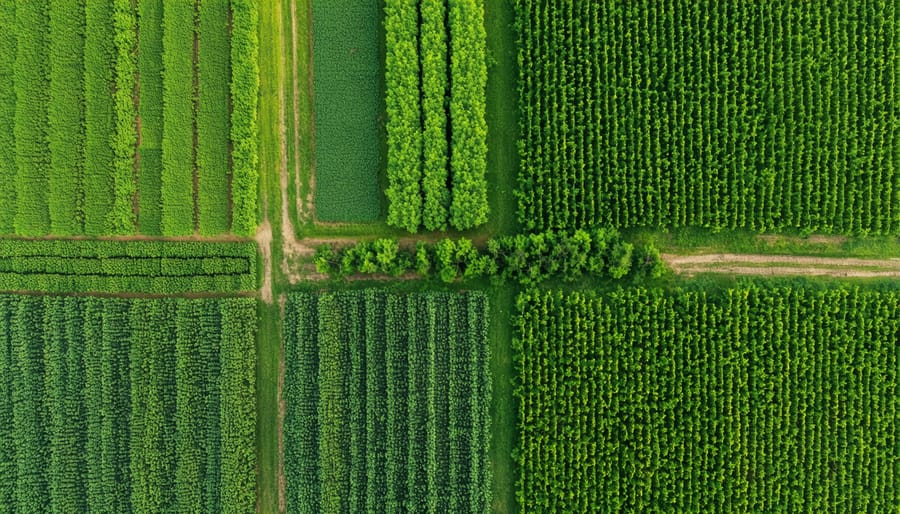Confronting the climate crisis demands bold action and innovative solutions. Climate change threatens our very existence, but amidst the dire warnings, a ray of hope shines through. By harnessing the power of science, technology, and human ingenuity, we can turn the tide and build a sustainable future for generations to come.
Climate Solutions 101 is your comprehensive guide to understanding and implementing the practical strategies needed to reduce greenhouse gas emissions and mitigate the impacts of global warming. From renewable energy to regenerative agriculture, from energy efficiency to circular economies, this series will explore the most effective climate solutions available today.
Together, we can rise to the challenge and create a cleaner, greener world. The path forward is clear – now is the time for decisive action. Join the global movement of citizens, businesses, and governments working to solve the climate crisis before it’s too late. The solutions are within our grasp. All that’s needed is the will to implement them at the speed and scale required. Let Climate Solutions 101 be your roadmap to a brighter, more hopeful future.
Soil Health Strategies

Cover Cropping 101
Cover cropping is a powerful tool for Alberta farmers to improve soil health, reduce erosion, and enhance nutrient management. By planting a diverse mix of crops between main cropping seasons, you can protect your soil from the harsh Canadian winters while adding valuable organic matter. Leguminous cover crops, such as clover and vetch, fix atmospheric nitrogen, reducing the need for synthetic fertilizers. Grasses like rye and oats help prevent soil erosion and improve water infiltration. To maximize benefits, select cover crop species based on your specific soil needs and farm goals. Timing is crucial – aim to plant in late summer or early fall to ensure adequate growth before winter. Terminate cover crops at least two weeks before planting your main crop to allow residue to break down. By incorporating cover cropping into your rotation, you can build healthier, more resilient soils that support productive and sustainable farming for generations to come. As fellow Alberta farmer John Smith shares, “Since adopting cover cropping, I’ve seen a noticeable improvement in my soil structure and crop yields. It’s a win-win for my farm and the environment.”
Minimizing Tillage for Maximum Results
Reduced tillage is a game-changer for Alberta farmers looking to boost soil health and combat climate change. By minimizing soil disturbance, this practice helps maintain soil structure, reduce erosion, and enhance water retention. It also saves time and fuel, lowering your carbon footprint and operational costs. Transitioning to reduced tillage can be challenging, but the long-term benefits are well worth the effort.
To get started, consider implementing organic no-till practices gradually, starting with a portion of your land. Invest in specialized equipment like no-till drills and use cover crops to suppress weeds and improve soil quality. Seek advice from experienced farmers and attend workshops to learn best practices. Remember, building healthy soil takes time, but with patience and persistence, you’ll see increased yields, resilience to drought and pests, and a more sustainable future for your farm.
Efficient Nutrient Management
Efficient nutrient management is a key component of sustainable farming practices in Alberta. By optimizing nutrient use efficiency, farmers can reduce runoff and minimize environmental impacts while maintaining crop productivity. Precision farming techniques, such as variable rate application and GPS-guided systems, allow for targeted nutrient application based on soil tests and crop requirements. This approach ensures that plants receive the right amount of nutrients at the right time, reducing waste and overuse.
Incorporating organic amendments, like compost, manure, and cover crops, can also enhance soil health and improve nutrient cycling. These practices add essential nutrients, increase soil organic matter, and promote beneficial microbial activity. For example, Albertan farmer John Smith has seen significant improvements in his soil structure and crop yields since implementing a cover cropping system on his 1,000-hectare farm.
Nutrient management planning is another essential tool for farmers. By developing a comprehensive plan that takes into account soil type, crop rotation, and weather patterns, farmers can make informed decisions about fertilizer application and minimize the risk of nutrient loss. The Alberta government offers resources and support for farmers looking to develop nutrient management plans, including workshops and one-on-one consultations with agricultural experts.
Adopting efficient nutrient management practices not only benefits the environment but also makes economic sense for farmers. By reducing input costs and improving crop yields, these strategies can lead to increased profitability and long-term sustainability. As more Albertan farmers embrace these practices, they are contributing to a healthier, more resilient agricultural landscape for generations to come.

Water Conservation Techniques
Water conservation is a critical aspect of sustainable agriculture, especially in regions like Alberta that face varying precipitation levels. Farmers can implement several techniques to optimize water usage and maintain crop health. Drip irrigation systems deliver water directly to plant roots, minimizing evaporation and runoff. This targeted approach can save up to 60% of water compared to traditional sprinkler systems. Mulching with organic materials like straw or compost helps retain soil moisture, reduce evaporation, and suppress weed growth. By improving water infiltration and soil structure, mulching enhances the soil’s water-holding capacity.
Selecting drought-tolerant crop varieties is another effective strategy. These plants have adapted to thrive in water-scarce conditions, requiring less irrigation while maintaining yield and quality. Examples include certain wheat, barley, and canola varieties well-suited to Alberta’s climate. Cover cropping with moisture-conserving species like clover or vetch can also improve soil health and water retention. By adopting these techniques, farmers can significantly reduce their water footprint, lower irrigation costs, and build resilience against drought. Implementing water conservation practices not only benefits individual farms but also contributes to the sustainable management of Alberta’s precious water resources.

Renewable Energy on the Farm
Renewable energy presents a significant opportunity for farmers to reduce their carbon footprint and enhance the sustainability of their operations. Solar panels and wind turbines are two prominent technologies that can help farms generate clean electricity on-site. By investing in solar power systems, farmers can harness the abundant energy from the sun to power their equipment, irrigation systems, and farm buildings. This not only reduces reliance on fossil fuels but also helps lower energy costs in the long run.
Wind turbines, particularly in areas with consistent wind patterns, can be another viable option for farms. These turbines can generate electricity to supplement or even replace grid-supplied power. Farmers can also explore the potential of biomass energy by utilizing agricultural waste, such as crop residues or manure, to generate heat and electricity through processes like anaerobic digestion.
Adopting renewable energy technologies not only contributes to a cleaner environment but also provides farmers with energy independence and potential revenue streams through selling excess electricity back to the grid. Government incentives and financing options are often available to support the transition to renewable energy on farms. By embracing these sustainable practices, farmers in Alberta can lead the way in creating a more resilient and environmentally friendly agricultural sector while also benefiting from long-term cost savings and enhanced community support for their green initiatives.
Agroforestry and Carbon Sequestration
Agroforestry is an innovative land management approach that integrates trees into agricultural systems, offering a powerful solution for sequestering carbon while providing numerous benefits to farmers. By strategically planting trees alongside crops or livestock, agroforestry systems can enhance soil health, improve water retention, and create habitat for beneficial wildlife. Trees absorb carbon dioxide from the atmosphere through photosynthesis, storing it in their biomass and the soil. Research has shown that agroforestry systems can sequester significantly more carbon compared to conventional agricultural practices.
In addition to carbon sequestration, agroforestry provides a range of economic and environmental advantages for farmers. Trees can act as windbreaks, reducing soil erosion and protecting crops from extreme weather events. They can also provide shade for livestock, improving animal welfare and productivity. Agroforestry systems can diversify farm income streams through the production of timber, firewood, fruit, or nuts. By embracing agroforestry, Alberta farmers can contribute to climate change mitigation while enhancing the resilience and profitability of their operations. Adopting this sustainable land management approach not only benefits individual farms but also contributes to the broader goal of creating a more sustainable and climate-friendly agricultural sector in Canada.
Conclusion
In conclusion, climate solutions for Alberta farmers encompass a range of strategies, from improving soil health through regenerative practices to adopting energy-efficient technologies and renewable energy sources. By implementing these climate solutions, farmers can not only reduce their carbon footprint but also enhance the long-term sustainability and resilience of their farms. The importance of community collaboration cannot be overstated in this process. By sharing knowledge, resources, and experiences, farmers can learn from one another and collectively work towards a more sustainable future for agriculture in Alberta. Together, we can build a thriving and climate-resilient agricultural sector that benefits both our farms and the environment.











